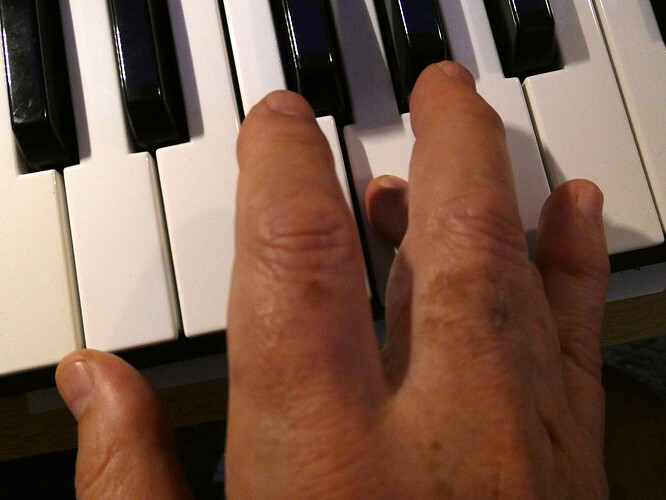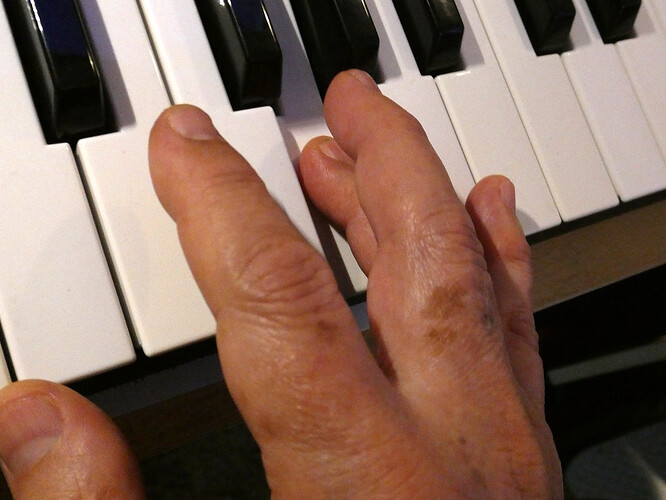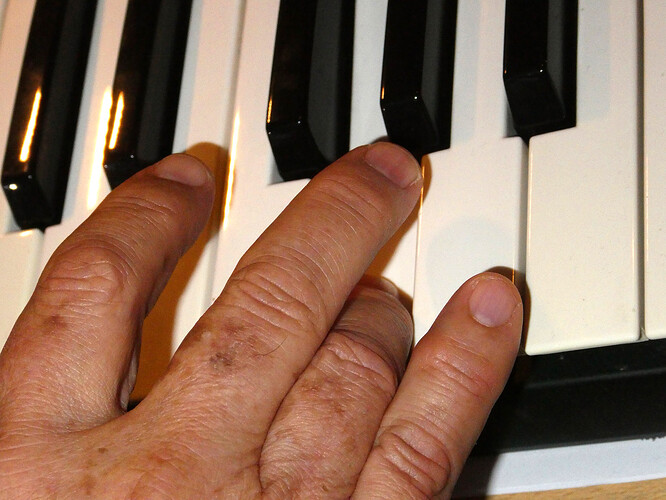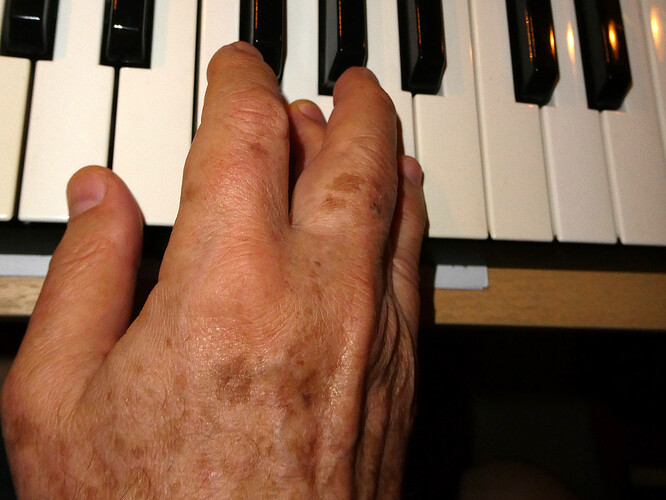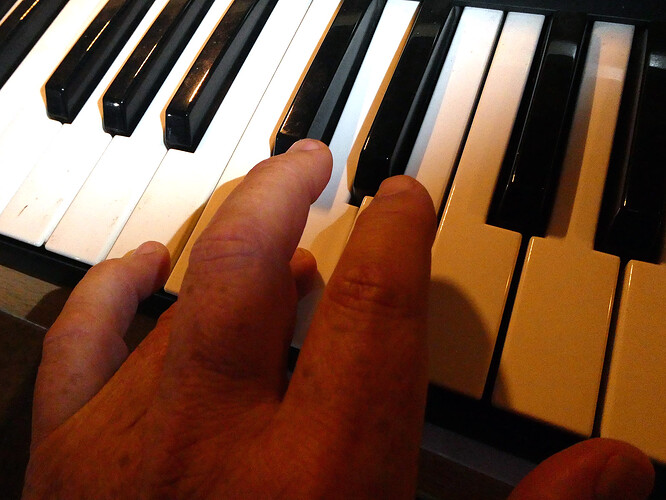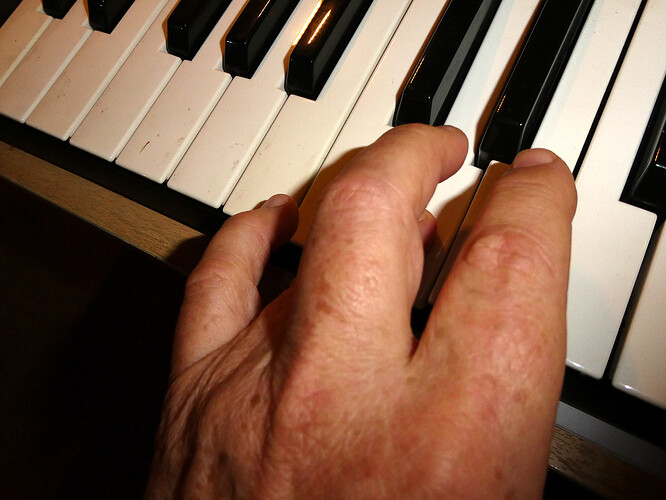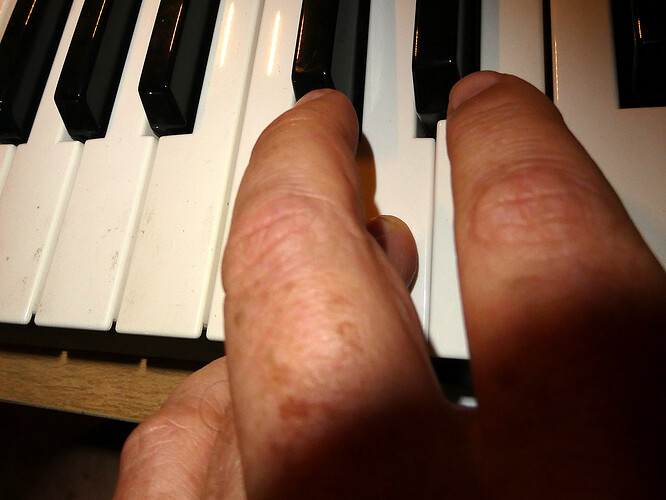During the harpsichord era, other than the occasional passage of the thumb (mostly when ascending with the left hand), scales and other passages were played by either finger crossing and hand shifting. Let us clarify what the sources tell us.
PLAYING A SCALE WITH FINGER CROSSING
Let us say we wish to play with the r.h. C-D-E-F with fingers 3-4-3-4, with the usual non-legato articulation.
The movement with finger crossing is as follows:
a) We lower 3 on C.
b) We raise 3 from C, while we lower 4 on D.
c) We move 3 laterally over 4, while we slip 4 on the key D towards the palm of the hand.
d) 4 leaves D at the same time as we lover 3 on E.
e) 4 raises up diagonally and is ready to play F.
f) We raise 3 from E, while we lower 4 on F.
g) We raise 4 from F.
By suitably changing the timings above, we can also play this scale legato.
The above is described both in texts and in paintings.
Note: movements c,d,e above produced upon Quantz (who saw J.S. Bach playing in his last years), writing at the time where most players were using the modern universal passage of the thumb, the erroneous impression that J.S. Bach was mostly moving fingers towards the palm of the hand instead of raising them: actually he did this only when a finger was being crossed by another one.
PLAYING A PASSAGE WITH HAND SHIFTING
Let us say we have a long passage for the r.h. moving up the range, for example two groups
C-D-E-C D-E-F-D E-F-G-E F-G-A-F
This is the movement:
a) We play C-D-E-C D-E-F-D with 2-3-4-2 3-4-5-3.
b) At this point 2 is hanging over C. As soon as we have lifted the last 3 above, we quickly shift the hand laterally so that 2 is now over E.
c) We play E-F-G-E F-G-A-F with 2-3-4-2 3-4-5-3.
Within each group we can play either non-legato or legato, but the transition between groups can only be non-legato.
PLAYING A SCALE WITH HAND SHIFTING
As above, let us say we wish to play with the r.h. C-D-E-F with fingers 3-4-3-4, the usual non-legato articulation.
The movement with hand shifting is as follows:
a) We lower 3 on C.
b) We raise 3 from C, while we lower 4 on D.
c) We raise 4 from D.
d) We quickly shift the hand so that 3 is now above E.
e) We lower 3 on E.
f) We raise 3 from E, while we lower 4 on F.
g) We raise 4 from F.
The notes D-E are inevitably non-legato.
There is a serious problem here:
- Most of the present-day videos online showing both Renaissance and Baroque music being played with early fingerings, play the scales with hand shifting.
- All the harpsichord era sources about playing scales refer to finger crossing, some with succinct, a few with detailed movements. This is also what modern pioneers Boxall and Lindley advocated. No source known to me describes playing scales with hand shifting.
QUESTIONS:
- Why do many (if not most) early-fingering players nowadays play scales with hand shifting?
- Are there any historical sources supporting this?
I will be very grateful for answers to these questions, that have kept me perplexed for a very long time.

